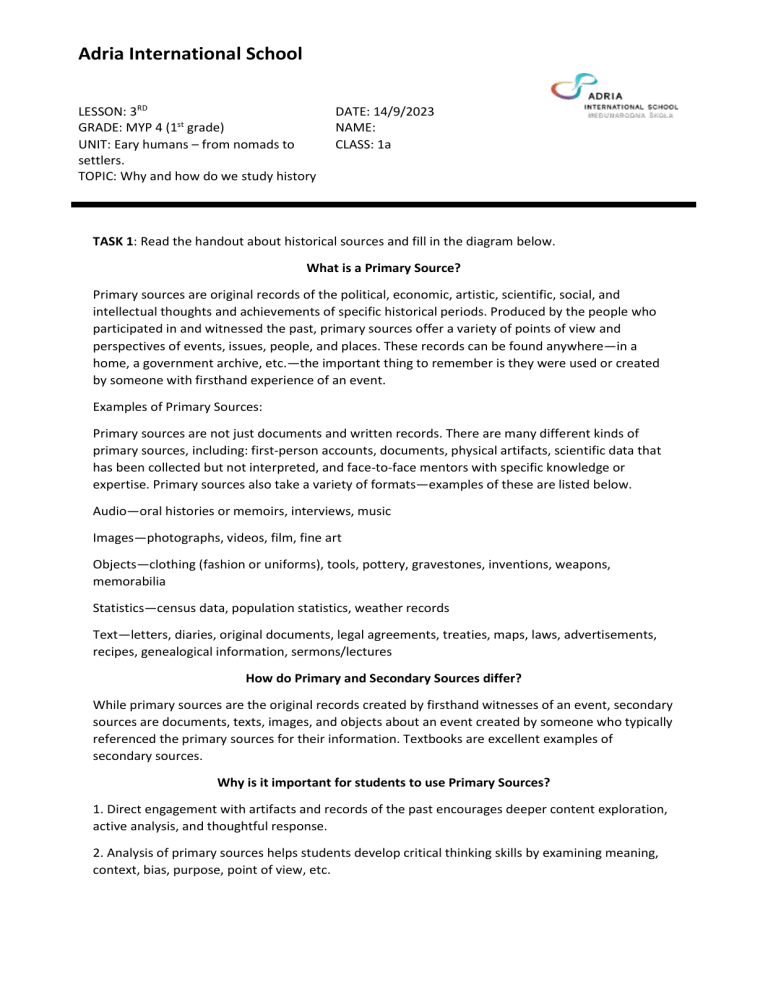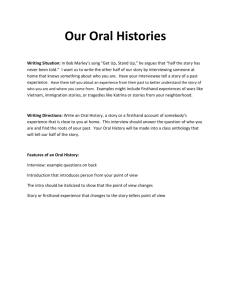
Adria International School LESSON: 3RD GRADE: MYP 4 (1st grade) UNIT: Eary humans – from nomads to settlers. TOPIC: Why and how do we study history DATE: 14/9/2023 NAME: CLASS: 1a TASK 1: Read the handout about historical sources and fill in the diagram below. What is a Primary Source? Primary sources are original records of the political, economic, artistic, scientific, social, and intellectual thoughts and achievements of specific historical periods. Produced by the people who participated in and witnessed the past, primary sources offer a variety of points of view and perspectives of events, issues, people, and places. These records can be found anywhere—in a home, a government archive, etc.—the important thing to remember is they were used or created by someone with firsthand experience of an event. Examples of Primary Sources: Primary sources are not just documents and written records. There are many different kinds of primary sources, including: first-person accounts, documents, physical artifacts, scientific data that has been collected but not interpreted, and face-to-face mentors with specific knowledge or expertise. Primary sources also take a variety of formats—examples of these are listed below. Audio—oral histories or memoirs, interviews, music Images—photographs, videos, film, fine art Objects—clothing (fashion or uniforms), tools, pottery, gravestones, inventions, weapons, memorabilia Statistics—census data, population statistics, weather records Text—letters, diaries, original documents, legal agreements, treaties, maps, laws, advertisements, recipes, genealogical information, sermons/lectures How do Primary and Secondary Sources differ? While primary sources are the original records created by firsthand witnesses of an event, secondary sources are documents, texts, images, and objects about an event created by someone who typically referenced the primary sources for their information. Textbooks are excellent examples of secondary sources. Why is it important for students to use Primary Sources? 1. Direct engagement with artifacts and records of the past encourages deeper content exploration, active analysis, and thoughtful response. 2. Analysis of primary sources helps students develop critical thinking skills by examining meaning, context, bias, purpose, point of view, etc. 3. Primary source analysis fosters learner-led inquiry as students construct knowledge by interacting with a variety of sources that represent different accounts of the past. 4. Students realize that history exists through interpretation that reflects the view points and biases of those doing HISTORICAL SOURCES TYPE: TYPE: DEFINITION: DEFINITION: EXAMPLES: EXAMPLES:



